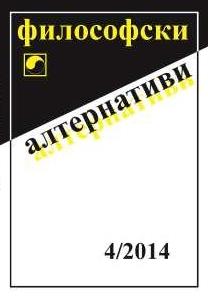Аурата на модността и модността на аурата
The Aura of Fashion and the Fashionableness of Aura
Author(s): Andrey LeshkovSubject(s): Philosophy
Published by: Институт по философия и социология при БАН
Keywords: Aesthetic(s); auratic; fashion(s); representation; style(s); taste(s); theatricality; Kant; Simmel.
Summary/Abstract: This article aims to clarify three main problems. 1) What makes of tastes, fashions, and styles phenomena pertaining to the auratic? 2) How can they be presented according to the rules of thearticity? 3) What makes them all thinkable as philosophically significant aesthetic phenomena? As to fashion, it was (traditionally) presented as being an antithesis to good taste(s). A person blindly following the whims of fashion was a person without style, whereas a man of style was one who used his own judgement. Kant shared this view, and Simmel’s formal sociology betrays the deep influence of the former’s aesthetics. Simmel’s essays on fashion ironically interpret Kant’s idea of a sensus communis: the community of fashion represents the community of tastes as a really existing entity. To Simmel, fashion combines two opposite forces – while being an accepted way in which individuals distinguish themselves from others, it also responds to the individual’s need for communal involvement. Because of this, the charm of novelty that fashion offers generates an aesthetic pleasure. Thus, it proposes an „as if “ solution to the central problem in the philosophy of life, expressed in the antinomy of taste as formulated by Kant. Fashion teaches moderns how humans can belong to a society without losing their individualities, how they can both stick to their own private tastes and expect others (who have tastes of their own) to share it in a kind of sensus communis. And Simmel’s suggestion of the „stylized life-style“ further develops the same idea: in modernity, both style and fashion are embodiments of „good taste“, theatrically representing everyday commonsensical prejudices.
Journal: Философски алтернативи
- Issue Year: XXIII/2014
- Issue No: 4
- Page Range: 122-136
- Page Count: 15
- Language: Bulgarian
- Content File-PDF

